What Are The Top Street Foods To Try In Vietnam?

1. Vietnam street foods
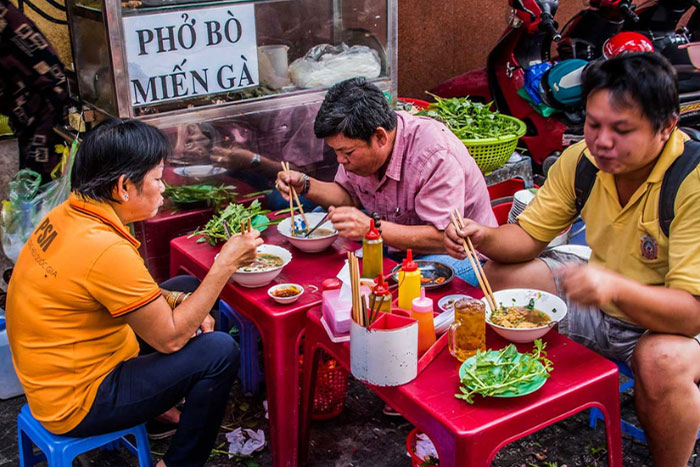
2. Top street foods to try in Vietnam
a. Balut (Trứng Vịt Lộn)
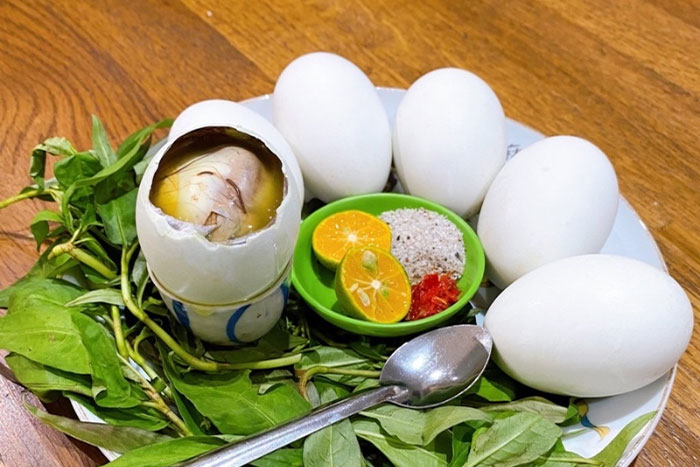
Balut is a fertilized duck egg with a developing embryo inside, typically between 14 to 21 days old. It is boiled and then taken out of its shell to be eaten directly. It is not only consumed in Vietnam but also in other countries within Southeast Asia, such as the Philippines. According to Vietnamese beliefs, balut is considered healthy food to build strength and retain vital forces, normally taken by those who need more energy.
Crack open the shell, take a sip of the broth, and then consume the chick and the egg itself. It is typically served garnished with a plate of fresh herbs, like rau răm—Vietnamese coriander—as well as slices of ginger and a pinch of salt and pepper; sometimes it even gets a squirt of lime. You can find balut on the street, often in stalls or at street vendors, especially in southern Vietnam. It's often eaten as an evening Vietnamese street snacks.
b. Jellyfish Salad (Nộm Sứa)
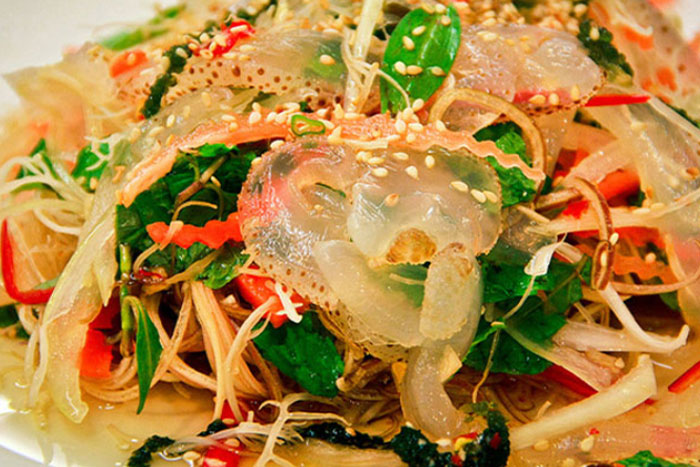
Jellyfish salad is light and refreshing, prepared with jellyfish blanched to take away its salinity and make it crunchy. The jellyfish is mixed with fresh herbs, vegetables like cucumber and carrots, and sometimes green mango for a nice tanginess. This dish is common in places like Nha Trang, where the catch of fresh seafood is good. It is mostly enjoyed during summer as this is cool and refreshing.
It is usually mixed with dressing made from fish sauce, lime juice, sugar, garlic, and chili. The flavor inside the dish is well-balanced between sweet, sour, and spicy. This dish is always well-garnished with peanuts and fried shallots for added texture. You could find jellyfish salad in any seafood restaurants or Famous street food in Vietnam stalls by the coastals of Nha Trang and Ha Long.
c. Snail Dishes (Ốc)
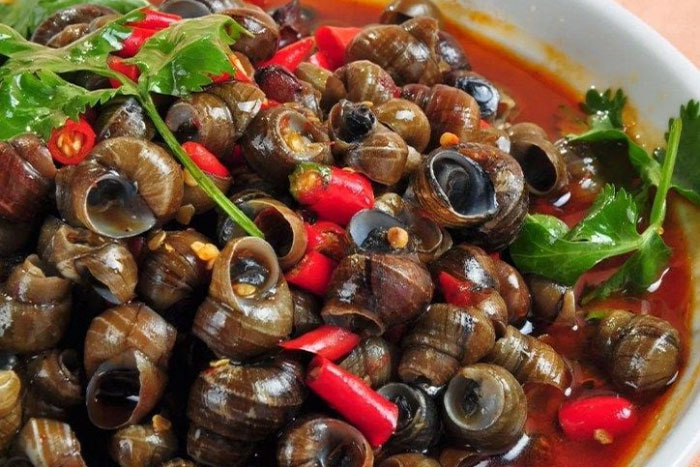
Snails are also used in Vietnamese cuisine in many ways, raw and different kinds steaming, grilling, sautéing with lemongrass and chili, and simmering in coconut milk. Each possesses a different texture and flavor. Snail-eating is a social thing in Vietnam; it is usually done in the evening with friends over drinks. It is especially popular in the Ho Chi Minh City area, as well as other southern areas.
They are normally served with a number of dips, depending on the style of cooking. The most widespread dips would include a combination of salt, pepper, and lime juice, or a spicy fish sauce with chili and garlic. Snail restaurants, in Vietnamese "quán ốc," are found on almost every corner of Ho Chi Minh City and can be found elsewhere in the country. Many restaurants specialize in just about every type of snail under the sun.
d. Grilled Quails (Chim Cút Nướng)
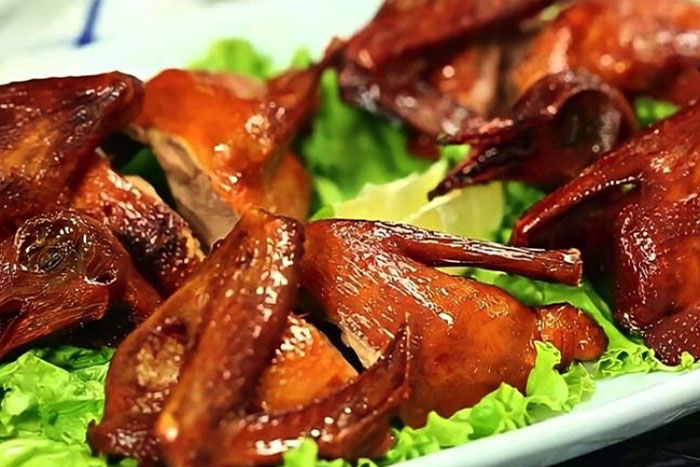
Grilled quails are small birds that are marinated in a mixture of honey, soy sauce, garlic, and spices. After that, they are grilled on the charcoal until the skin is crispy, caramelized. The meat is tender inside and full of flavor with a sweet glaze. Grilled quails are considered a delicacy in Vietnam and can be found as a popular Vietnamese street snacks or even a small plate at casual eateries.
The quails are normally served whole and are usually served with a dipping sauce made from lime juice, salt, and pepper. Some of the vendors may also serve a side of pickled vegetables to offset the richness of the meat. You can commonly find the grilled quails at night markets, Famous street food in Vietnam stalls, and small eateries by the road, especially in Southern Vietnam.
e. Chicken and Southern Medicine Stew (Gà Hầm Thuốc Bắc)

This stew is a nutritious dish with chicken and many kinds of traditional Chinese medicinal herbs, which is well known in Vietnam as "Southern medicine." Such herbs often include ingredients like goji berries, dried longan, jujube or red dates, and ginseng, which are thought to boost health. Chicken and Southern medicine stew can be consumed as a tonic, especially by people who have recovered from illness or need strengthening of health. It is also served to new mothers after childbirth as a way of recovery.
The stew is cooked for a long time so the chicken can be tender and the broth rich and tasty with the potency of medicinal herbs. It is normally served in a small earthen pot to retain the heat and may be accompanied by a bowl of rice. This dish may be found in traditional eateries or restaurants that deal in medicinal foods, and may be particularly well represented in larger cities such as Hanoi and Ho Chi Minh City.
f. Che

Well, Che is a dessert that may include everything from beans—mung beans, black-eyed peas—jellies, fruits like lychee, longan, or jackfruit, and, of course, coconut milk. While some of the varieties are hot, a good deal of them are taken cold, especially in their most common form—a layered, iced treat, topped in a tall glass: The sweet, rich flavors of che combine with its refreshing, at times icy texture, to make it a perfect treat, especially in the tropical heat of Vietnam.
g. Bun Rieu
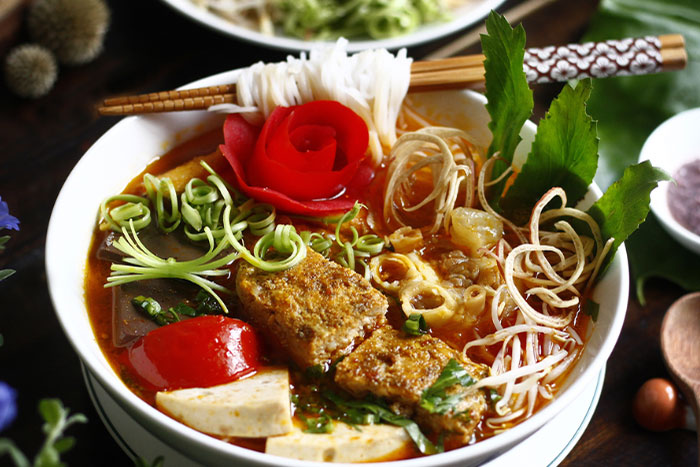
Bun Rieu is a flavor-packed and aromatic noodle soup from Northern Vietnam. It includes an absolutely characteristic tangy tomato-based broth, made by the simmering of tomatoes, crab paste, and sometimes shrimp paste for a rich umami flavor. It is usually served with rice vermicelli noodles and topped with crab or shrimp cakes, tofu, lots of fresh herbs like cilantro and perilla leaves. Squeeze lime juice and dust with chili flakes, refreshing and spicy. Comforting Bun Rieu with its sweet, sour, salty flavor balance—any time is suitable for this dish.
h. Nem Nuong Grilled Pork Sausages

The nem nuong is almost the equivalent of the flavor bomb—that incendiary, ambrosial dish that knocks your socks off. Basically, this is grilled pork sausage that should be on the list of dishes to try when visiting Vietnam. Ground pork is mixed with a pungent blend of minced garlic, fish sauce, sugar, and spices before it is shaped into small patties or sausages. These are then grilled on charcoal until they develop that smoky, caramelized skin.
Nem Nuong is often served with rice paper and fresh herbs like mint, basil, and lettuce, as well as a variety of vegetables like cucumber and pickled carrots. You'll wrap this sausage in the rice paper with the fresh herbs and vegetables, and then you will be able to dip it in a savory, sweet dipping sauce made with hoisin and peanuts. What makes this Nem Nuong special to Street food Vietnam lovers is its perfect combination of smoky, savory sausage with fresh, crunchy vegetables and aromatic herbs.
l. Com Tam Broken Rice

Com Tam refers to a dish that is very dear to the hearts of locals who hail from Southern Vietnam, particularly the residents of Ho Chi Minh City. It is made from fractured rice grains, which become a by-product during milling, giving the rice its distinctive texture that is just a tad more delicate than regular rice.
Com Tam is served most commonly with a variety of toppings. The most popular topping would be grilled pork chops, suon nuong, marinated in a mix of garlic, lemongrass, and fish sauce, then grilled to perfection. It is often finished with a fried egg, pickled vegetables- generally daikon and carrot, and on the side is placed a nuoc cham, a fish sauce-based dipping sauce. Others are bi, shredded pork skin, and cha trung, a cake of steamed egg and pork, and scallion oil. Com Tam is filling and full of flavor, making it a satisfying meal for many by virtue of its great mix of textures and flavors that suit it well for lunch or dinner.
k. Banh Cuon

This fine and delicate dish consists of thin steamed rice rolls filled with ground pork and wood ear mushrooms. The rice batter is spread thin onto a cloth stretched over a pot of boiling water, steaming it until translucent and slightly chewy. Then, rolls are folded around the filling, topped with fried shallots for a bit of crunch. Banh cuon is often served with a side of nuoc cham, a tangy fish sauce-based dipping sauce, sometimes served with cha lua, Vietnamese pork sausage, or sometimes at times as a side with bean sprouts and fresh herbs. It is very famous as a type of breakfast food, but it is consumed as a light meal or Vietnamese street snacks at any time. The light rice rolls, savory filling, and tangy dipping sauce come into combination to create harmony and satisfaction for flavor.
3. Some tips for trying street foods in Vietnam
- Choose Busy Stalls
- Observe Food Preparation
- Start with Cooked Foods
- Use Condiments Cautiously
- Stay Hydrated with Bottled Water
Street food in Vietnam can be found everywhere, from bustling city streets to rural areas, offering an authentic taste of local cuisine. In Hanoi, explore areas like the Old Quarter, where streets such as Ta Hien and Luong Ngoc Quyen are lined with vibrant food stalls serving popular dishes like pho and banh mi. Ho Chi Minh City boasts lively street food scenes in neighborhoods like District 1, particularly around Ben Thanh Market and the areas of Bui Vien and Nguyen Hue streets, where you can savor a variety of dishes from banh xeo (Vietnamese pancakes) to com tam (broken rice). In Hoi An, the Ancient Town is renowned for its street food, with stalls offering specialties like cao lau and white rose dumplings along the riverside and in the central market. Da Nang also has a vibrant street food scene, especially around the Han Market and on streets like Nguyen Chi Thanh. Even in smaller towns and rural areas, look for local markets and roadside stalls where you can experience traditional Vietnamese flavors. Engaging with locals and asking for recommendations can also lead you to hidden gems for street food across the country.
Eating street food in Vietnam is generally safe and an integral part of experiencing the local culture, but there are important precautions to ensure a positive experience. Street food vendors often use fresh, locally sourced ingredients and prepare dishes right in front of you, which can be reassuring. To minimize the risk of foodborne illnesses, choose vendors who have high customer turnover and visible cleanliness. Look for places where the food is cooked thoroughly, as this can kill harmful bacteria. It’s also wise to select vendors that serve food hot, as high temperatures help eliminate potential pathogens. Be cautious about consuming raw or undercooked items, particularly seafood. Drinking bottled or boiled water, and avoiding ice from questionable sources, can help prevent waterborne illnesses. If you have a sensitive stomach or are not used to street food, start with milder dishes and observe how your body reacts. While many travelers enjoy street food without issue, listening to your body and using common sense will help ensure that your culinary adventure in Vietnam is enjoyable and safe.
Best Markets For Shopping In Vietnam? Vietnam is well known for attracting shoppers, with its varied retail scene. From city hubs to countryside villages the markets, across the country offer a delightful mix of handmade crafts fresh local goods and one of a kind mementos. Whether you're looking for fabrics, intriguing art pieces or delicious local treats, Vietnam local market guarantee a shopping adventure that truly connects you with the essence of the community. So follow us to see the best market in Vietnam.
Related travel guide
Other similar articles
CUSTOMIZABLE BY LOCAL EXPERTS
Personalized trip at the original price!
REFUND GUARANTEE
We believe in our work and promise to give you money back.
GOOD PRICE / QUALITY
95% satisfied more than expected!
24/7 LOCAL SUPPORT
We are always available online to provide assistance at any time.
Most read articles
Autour Asia is highly recommended on
Embracing the mission of "Satisfied more than expected" and providing authentic experiences, we have received numerous recommendations on reputable travel forums:























